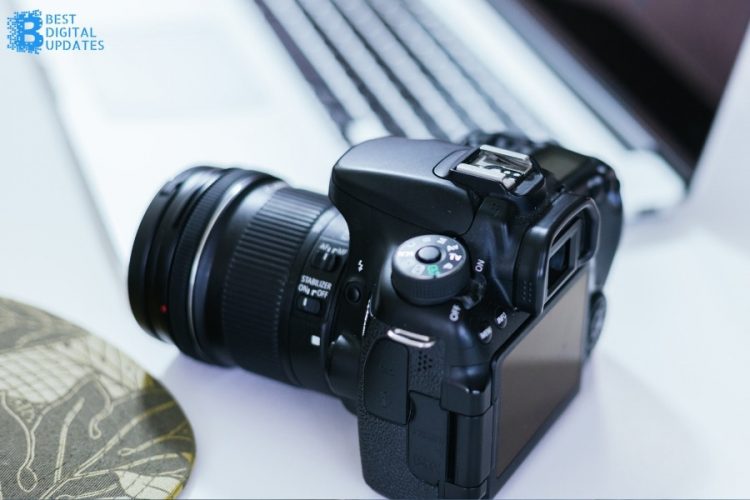If you are in the market comparing Canon, Nikon, or Sony camera prices to find the perfect DSLR camera to take your photography skills to the next level, you are in the right place. Let’s take a look at some crucial factors that you need to be familiar with before purchasing the best camera suitable for your needs:
Mirrorless Versus DSLR Cameras
Table of Contents
Conventional digital single-lens reflex (DSLR) cameras rely on inner mirrors to reflect light from the lens into the viewfinder. On the other hand, Mirrorless cameras don’t need reflectors; instead, the light travels directly via the lens onto the sensor and then to the rear LCD screen. The viewfinder shows a digitised version of what’s on the LCD screen.
Since the DSLR technology is older, the DSLR cameras are usually more affordable but heavier and bigger. On the other hand, Mirrorless cameras will be much lighter and smaller, but they tend to be on the pricier end. The absence or presence of mirrors in the cameras does not measurably alter the quality of the photos delivered by them.
Compared to the mirrorless camera price, you can get a better DSLR camera for the same amount of money. But it will take more space as they are on the bulkier side.
Sensors
Sensors are the digital version of the traditional film, capturing light from the lens and turning it into an impressive image. The bigger the sensor of your camera system is, the higher amount of light it can receive, the higher amount of detail the camera will apprehend. The majority of the sensors available in the market are either full-frame (36 by 24 millimeters) or APS-C size (23.5 by 15.6 millimeters).
ISO Range and its importance
ISO is a way of measuring how sensitive your sensor is to light. Most of the cameras come with a range of sensitivity levels that you can calibrate. If the ISO levels are lower, your sensor picks up relatively less light. On the other hand, your sensor picks up much more light if the ISO levels are higher.
For shooting in overcast, dark, or otherwise low-light situations, a higher ISO is appreciated. Higher ISO levels are also crucial while shooting subjects in motion as fast-moving shutters allow less light to pass in, and the camera will need to process all the light it can capture in that split second.
Stabilization and its importance
The stabilisation feature prevents the blurring effects due to camera shake. While clicking the shutter button when you twitch your hand, the stabilization technology ensures that the image won’t get fuzzy. This feature comes in handy while shooting in outdoor-adventure conditions, and you are trying to capture moving people or other moving subjects without a tripod.
Over the past few years, most brands started offering in-built stabilisation features in their mid and high-end cameras. In case your camera doesn’t have this feature, you can purchase additional lenses for it.
Lens and other factors
A set of convex and concave glass strips mounted inside a plastic or metal tube that receives light and then focuses it on your image sensor are known as the lens. The lens controls a lot of aspects and plays a crucial role in how your image turns out.
A focal length is a distance between the sensor and the spot where light comes together inside the lens, and it determines how close up or wide you can shoot. Higher focal lengths make close-up shots, and lower focal lengths make wide shots. The zoom lenses that come with adjustable focal lengths can only work within a specific range.
The aperture is the amount of light that your lens allows in. It helps in determining the exposure and the level of background blur. A good lens with better and maximum apertures will bear lower f-stop numbers. The lower the aperture number, the better it is.
Regardless of your Canon or Sony camera prices, if you use cheaper or bad quality lenses with the Mirrorless or DSLR camera body, it won’t deliver you good quality images. The final tip of this guide would be to invest smartly in limited but good-quality lenses compatible with your camera.
The Economical way of purchasing your Mirrorless and DSLR cameras
The Bajaj Finserv EMI Store is the ultimate shopping station for purchasing any Mirrorless and DSLR camera. On the EMI Store, new and registered Bajaj Finserv EMI Network Card users can place an order for their favourite camera in a hassle-free way with the No Cost EMIs feature. EMI Network Card comes loaded with a pre-approved credit limit of up to Rs. 4 Lakh.
Gear up and grab your favourite DSLR camera from the Bajaj Finserv EMI Store with the No Cost EMIs option and repay the amount in easy monthly instalments over a tenor of 3 to 24 months.




















